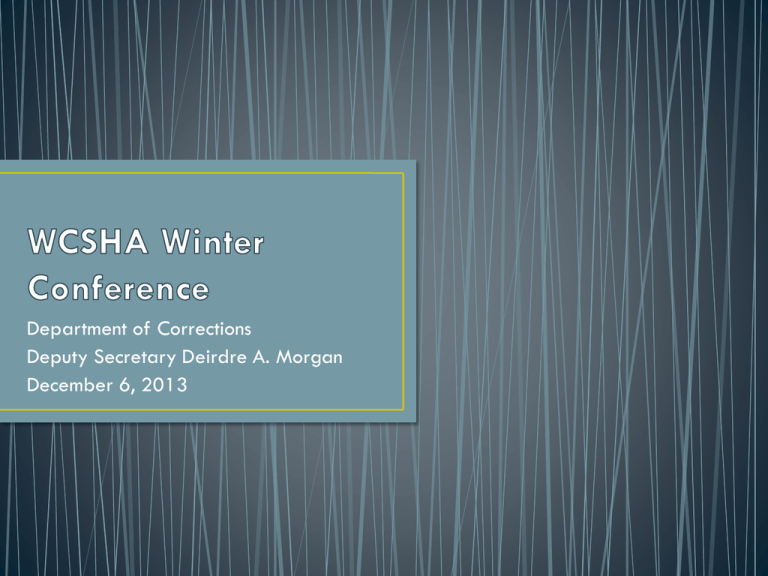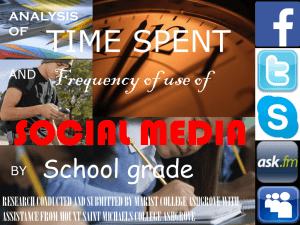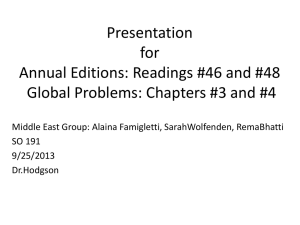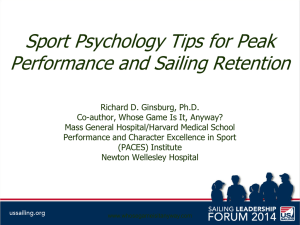
Department of Corrections
Deputy Secretary Deirdre A. Morgan
December 6, 2013
Demographics
Divisional Structure
Age
34 Facilities
Male
Female
• 5 Maximum
Oldest inmate
96
84
• 12 Medium
Youngest inmate
14
18
• 3 Minimum
Average age
37.3
37.1
• 14 Correctional Centers
Race
Male
Female
Population
White
54%
11094
68%
809
21,742 Inmates
Black
42%
8628
26%
308
American Indian / Alaskan
Native
3%
617
6%
72
Asian / Pacific Islander
1%
205
<1%
9
• 20,544 males
• 1,198 females
Mental Health
32% of Male inmates have a mental health condition. Of
these 7% have a serious condition*
76% of Female inmates have a mental health condition. Of
these 26% have a serious condition*
*e.g. bipolar disorder, schizophrenia, personality disorder, severe depression
Criminogenic Need: Substance Abuse
Approximately 90%
of current inmates are
either on a waiting list
or enrolled in AODA
Treatment
90%
0%
50%
100%
• Currently housing 345 inmates, WRC is administered by the
Department of Health Services in partnership with the
Department of Corrections.
• WRC is a specialized mental health facility established as a
prison to treat mentally ill inmates
• WRC provides education,
therapeutic services,
social services, clinical
services, nursing, and
medical care to deliver
the inter-disciplinary
programs at WRC.
• The Department of Corrections partners with the Department of
Health Services to administer the OARS program
• Serves men and women releasing to 25 counties in Southeastern
Wisconsin
• Case managers facilitate medical
and mental health care, medication
management, housing, employment,
and transportation for up to two
years post release
Age
Divisional Structure
17-21
22-26
27-31
32-42
43-52
53-62
63+
8 Geographic Regions
131 Probation &
Parole Units
10%
18%
17%
27%
18%
8%
2%
Race
Male
Female
White
69%
37512
73%
8862
Black
27%
14550
20%
2365
American Indian / Alaskan
Native
3%
1664
6%
756
Asian / Pacific Islander
1%
609
<1%
121
Population
66,439 Offenders
46,789 on probation
19,650 on parole or
extended supervision
“The primary mission of
Psychological Services is to
assist Agents, Supervisors,
Community Partners, Courts,
and others to identify and
develop mental health services
that may aid an offender in
being successful in the
community during his or her
period of supervision and
upon discharge.”
Staffing
Milwaukee
Other Regional
1 Psychologist
Supervisor
7 Licensed Chief
Psychologists
3 Licensed
Psychologists
5 internship
placements per
semester
117
59
Alternative to Revocation
Eval
Evaluate Emotional/Mental
Status
537
2012 Referrals
867
Anger/Violence assessment
Sex Offender Risk
Brief Counseling/Tx
364
Tx Recommendations
196
115
1 Psychology Chief
Performs court
ordered forensic sex
offender evaluations
Other
Fiscal Year 2012 intakes
Divisional Structure
Institution
Field
Lincoln Hills School
for Boys
2 Geographic Regions
(Northwest & Southeast)
Copper Lake Girls
School
6 Field Offices
Population
275 institution youth
181 field youth
248 boys
164 boys
27 girls
17girls
Institution Population by Race
Boys
Girls
American Indian / Alaskan
Native
3.6%
9
6.7%
2
Black
79.0%
196
73.3%
20
White
17.3%
43
20.0%
5
• Education and Employment
Training: Middle and High School
Credits, HSED, career and technical
education
• Substance Abuse Disorder
Treatment
• Alternate Care (out of home
residential care)
• Mental Health / Medication
Management
• Transitional Independent Living
• Juvenile Cognitive Intervention /
Families Count
• Aggression-Replacement Training
• Mentoring
• Sex Offender Treatment
•
•
•
•
•
•
•
Schools
Employers
Workforce Investment Boards
Social Services Providers
Law Enforcement
Wraparound and Reentry Networks
Transition Team meetings with youth, families and community
providers aiding re-entry planning.
Onsite medical and psychiatric
services are provided by:
•
The Health Services Unit
provides comprehensive
medical care assisting to
restore and maintain the
health of juveniles involved
with our programs.
•
HSU is comprised of nursing,
medicine, psychiatry and
dentistry all of whom provide
overall health care services.
•
Psychotropic Medication is
dispensed through HSU.
•
•
•
•
•
Physicians
Psychiatrists
Optometrists
Advance practitioners
Registered Nurses
• DJC is working to align
current practices with trauma
informed care models in
order to best address trauma
issues affecting youth
transition and return home.
• In partnership with DHS, DJC
launched a major initiative in
May 2012 to improve
treatment for youth who have
experienced significant
traumatic life events.
• Utilizing the TIC Grant DJC
has worked with Wisconsin
Family Ties to provide a
Parent Peer Specialist to 10
Dane County families.
• Parent Peer Specialists help
navigate the Juvenile Justice
system, work to understand
the effects of trauma on
youth and family, and also
help prepare families for a
youth’s return home.
• Utilization of SENSORY INTERVENTIONS in housing and
segregation units has produced some very promising outcomes.
Staff training and input is a key component to TIC success.
• Sensory items include: calming rooms that include a controlled
light source, aromatherapy/smell items, tactile/touch/feel items,
auditory items-etc… these involve as many senses as possible.
• Example items include: Weighted blankets, high quality
reading materials, MP3 player, body pillow, wall pictures, sound
machines, stress balls, etc.
By the Numbers:
Mental Health services for both
the Lincoln Hills boys school
(LHS) and Copper Lake girls
school (CLS) continue to be a
significant emphasis.
Combining continued service
provided by PSU and a postdoctoral intern program allows
for comprehensive mental
health coverage for both
Lincoln Hills and Copper Lake.
DJC also contracts with the
Department of Health Services
(DHS) to provide 29 residential
placements focused on mental
health services to male youth
at the Mendota Juvenile
Treatment Center (MJTC).
75% of boys at Lincoln Hills School
100% of girls at Copper Lake School
• Receive some sort of ongoing
psychological services (this does not
count the 29 boys at MJTC) (8 of our 25
girls have significant mental health
needs)
57% of boys at LHS
58% of girls at CLS
• Have an identified special education
need
39% of boys at LHS
74% of girls at CLS
• Are currently prescribed psychotropic
medication
Substance abuse treatment is provided through our Seeking Safety
curriculum for boys and Reflections curriculum for girls.
These are evidence based programs designed to address
substance abuse issues.
83% of boys are
identified as having some
kind of substance abuse
issue.
76% of girls are
identified as having some
kind of substance abuse
issue.
Dialectical Behavior Therapy (DBT)
DBT is appropriate for girls with suicidal or para-suicidal behaviors
occurring within the past 6 months, borderline personality traits,
conduct disorder, substance abuse disorders, and eating disorders.
DBT is an evidence based cognitive behavioral skills group infused
with mindfulness practices. Core mindfulness, distress tolerance,
emotion regulation and interpersonal effectiveness
make up the
components of this program.
TRIAD
TRIAD is provided at CLS as a treatment group designed to treat asnd
assist young women with histories of substance abuse, emotional
problems, and trauma in the form of violence and/or abuse. TRIAD
aims to build perseverance, positive and empowering skills.
Increasing Family Involvement
DJC is considering a Mobile Technology Initiative which could allow
families and other support persons to connect with youth in juvenile
facilities from their homes. In addition, multiple models for
increasing family involvement are being explored; e.g. family
advisory councils









